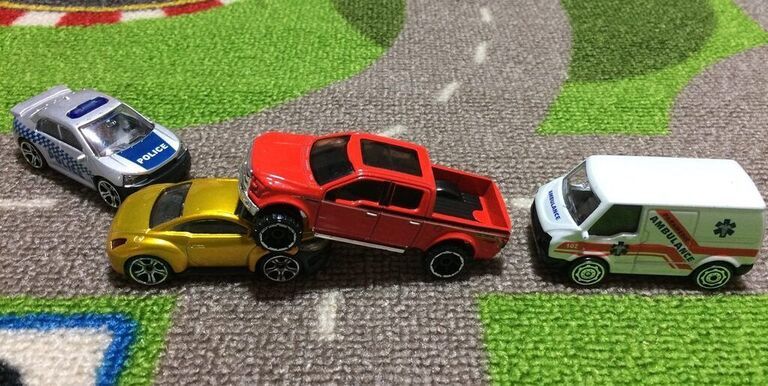
If you’ve seen the first three posts in the Hack Your Auto Insurance series, congratulations! You are already a highly educated consumer.
- You know how to look up the latest consumer ratings for many of the biggest insurance providers and insurance ratings for the car you drive—or the car you may wish to drive.
- Looking at over 400 sample price quotes, you’ve seen that it’s possible to save hundreds and sometimes thousands of dollars a year by shopping around.
- You have also found out how to compare your insurance cost to the average insurance cost and how to weigh the costs and benefits of different types of insurance.
Now here’s the bad news. Even with all this information at your fingertips, you don’t necessarily know what will happen if you get into a collision and need help from your insurance provider.
Insurance companies may want you to believe that their claims process is simple and you will be completely satisfied when it’s over. If you’re lucky, you’ve never had to make an insurance claim. So how can you know what to expect? And if you’ve had a bad experience, how can you know the next insurance claim will be any better?
US states have agencies in charge of regulating auto insurance providers. Some of them provide consumer-friendly information, like the California Insurance Commissioner’s brochure, “So You’ve Had an Accident. What’s Next?”, published in 2015. But these government agencies could be doing a lot better. For example, they could collect data on each provider’s average claim processing times and report the results to the public. They could also report on which insurance companies provide a rental car if you need one and the added cost for rental vehicle coverage.
Although California and other states haven’t made all this information available, we will provide a description of the auto insurance claims process and try to answer to some frequently asked questions about insurance claims. Below you will find some links to other websites with more information. While researching this blog post, we looked for information only from independent organizations that are not affiliated with or represented by the insurance industry, including government websites and public forums like Quora.
If you haven’t found the information you’re looking for, please leave a comment at the bottom of the page and we’ll do our best to give you a prompt reply.
What will happen if I file an insurance claim?
It goes without saying that the most important thing to do after an auto collision is to check if everyone is ok and get medical attention for anyone who has been injured. Safety comes first.
Next, you will want to start collecting information. Please use our Car Accident Preparedness Guide to make sure you have the supplies you’ll need and instructions to help maintain focus in a stressful time. You can print it out and keep a copy in the glove box along with your insurance details and vehicle registration form. Here’s some of the information you’ll need:
- Name, address, telephone number, and driver’s license number of all drivers
- License plate and vehicle identification numbers for all vehicles
- Name, address, and telephone number of any passengers or witnesses
- Photographs of damage and the collision scene
It’s also a good idea to draw a sketch of the collision on our preparedness guide.
If you have decided to file an insurance claim, the next step is to provide information about the collision to your insurance provider. What happens next depends on the information you’ve provided and the insurance company’s process of evaluating damage and approving elements of your claim, including property damage, medical expenses, and lost wages.
After a collision, as policyholders like you are providing information to insurance providers, your insurance company is also figuring out how to collect money from the driver who caused the collision or how much to pay if the collision was your fault. (This assumes the collision occurred in a state like California, where you pay damages for an auto collision only after you’ve found to be at fault.) If you’d like more information about how the insurance company goes about collecting money, search for the term subrogation.
How long does it take to process a claim?
In 2012, the California Department of Insurance published a set of time limits for insurance companies to carry out steps in the claims process. The state instructs insurance companies to take these actions immediately, but it provides time limits to show that insurers are acting in good faith.
How long do you have to report a collision?
Auto insurance professionals who tackle this question online often point out that there is no hard and fast time limit for contacting the insurance company with a claim. A collision can be a stressful experience. It’s certainly acceptable to go home and even have a good night’s sleep before filing an insurance claim.
The key question is whether the timeliness of your claim affects the insurance company’s ability to do its job, assessing damage and investigating your claim. After several days, can you still prove all the facts supporting your claim, such as the time and place of the collision? The insurance company is expected to act in good faith, and so are you.
Is it necessary to file a police report to make an insurance claim?
Police reports have a lot of information that helps insurance companies decide how to handle insurance claims. They show the date, time, and location of a collision, and a detailed description of what happened to each of the vehicles involved. They might also include driver and witness statements and photos. They also provide the perspective of a neutral party, the police officer, who has no vested interest in the outcome of your insurance claim. The insurance company must consider claims that don’t include police reports. But beware. You still need to provide all the necessary information, it might take longer to get your claim approved, and you might get back less money in the end.
Some websites claim that you don’t need to report an auto collision to the state Department of Motor Vehicles (DMV). It would be a good idea to find out if the police or your insurance provider will notify the DMV for you. The California Department of Insurance says if anyone is injured in a collision or vehicle damage is greater than $750, the accident must be reported to the DMV within 10 days or your license may be suspended.
What if the collision was not your fault?
Many of the steps to take after an auto collision apply regardless of who was at fault, you or another driver. First, make sure everyone is safe and get medical help if needed. Next, collect all the information you can from the California Insurance Department’s list above. If anyone else was involved in the collision, or if anyone was injured, it makes little sense not to contact the insurance provider. Your insurance protects you against liability if you think you’re not at fault but it turns out you’re at least partially responsible. Your insurance provider might also help you collect benefits from the at-fault driver’s insurance policy.
How do you handle disagreements with your insurance company?
The California Insurance Department says that most standard auto insurance policies contain an appraisal provision that entitles you to request a set of appraisals if you don’t agree with how much money the insurer is willing to pay for damages. You and the insurance company both select an appraiser. The appraisers then choose an umpire, someone who settles the difference if the appraisers can’t agree. Just keep in mind that getting an appraisal isn’t free. You pay for your own appraiser, and you split the umpire’s fee with the insurer.
Does it ever make sense to skip the insurance claim after a collision?
In 2013, Consumer Reports published an article looking at when to notify insurance about a collision and when not to. The short answer is as follows.
Always report collisions when they involve another vehicle. Even when vehicle damage seems minor and it seems at first like nobody was injured, vehicle repairs can be surprisingly expensive and some injuries aren’t immediately noticeable.
Keep in mind that in California, insurers can raise your rates any time you cause a collision leading to damage of $750 or more. The rate increase is the same whether the damages are $751 or $751,000. This might affect your decision making.
Also, be sure to ask your insurance company about loyalty programs, or accident forgiveness awards, that might be available. These options could allow you, for one time only, to file an insurance claim without facing a future rate increase.
The most clear-cut example of when not to file an insurance claim is when you’ve damaged only your own vehicle and your own property, such as a garage door, and the damage is superficial. Before filing a claim, always make note of your insurance deductible, the amount you pay out of pocket before insurance kicks in. If the total repair cost is lower than the deductible, you’re better off simply paying the repairs yourself. Keep this in mind when shopping for auto insurance. While comparing the annual premiums, pay attention to the deductible. Insurance is supposed to bring peace of mind, but it provides little security if you have to pay an exorbitant fee before claiming the benefits you need.



 AI-search
AI-search  Email
Email